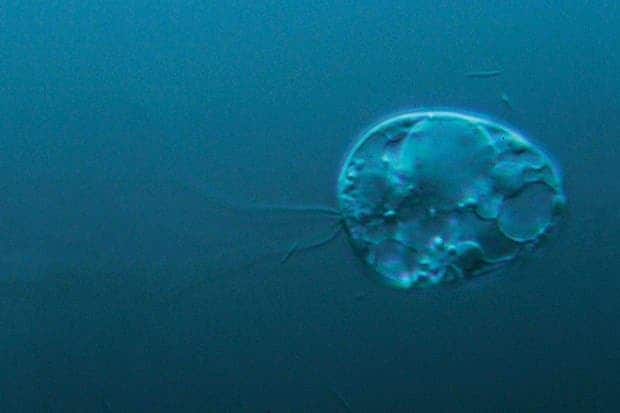After two decades of careful breeding and examining, scientists have declared a microscopic algae-eater to be one of the world’s oldest living organisms, and human’s most distant relative.

The elusive creature evolved about a billion years ago and, as far as researchers can tell after twenty years of studying, it doesn’t belong to any of the known categories of living animals: it is not a plant, animal, parasite, fungus or alga, they say.
“We have found an unknown branch of the tree of life that lives in this lake. It is unique,” says University of Oslo researcher Dr Kamran Shalchian-Tabrizi.
Well then… what is it? We can’t say, because we haven’t seen anything like it, ever; but it can give us some remarkable clues about how our planet was like a few million years ago.
“So far we know of no other group of organisms that descends from closer to the roots of the tree of life than this species”, which has been declared a new genus called Collodictyon.
Collodictyon lives in the sludge of a small lake called Ås, 30 kilometres south of Oslo – so far, researchers haven’t found them anywhere else. It has four flagella (tail like propellers) which it uses to move around, and has a size of 30-50 micrometers. Unlike bacteria, but much like plants, animals, and even humans, it is a member of the eukaryote family – it possess cell nuclei enclosed by membranes.
However, Collodictyon isn’t the most pleasant of company, enjoying a solitary life.
“They are not sociable creatures,” says co-researcher Professor Dag Klaveness, who bred millions of the tiny organisms for the study. “They flourish best alone. Once they have eaten the food, cannibalism is the order of the day.”
Researchers are thrilled, after discovering it 20 years ago, but not realizing at the moment how important it was.
“It is quite fascinating that we can still find these kinds of organisms after so many years,” says Tabrizi. “It has been outside our living rooms for millions of years and we haven’t seen it.”


